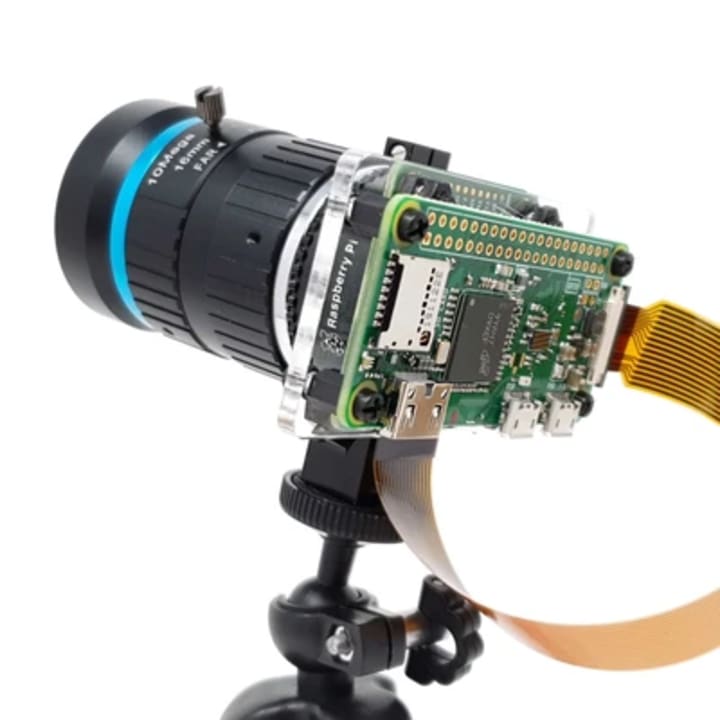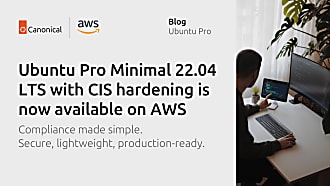Oliver Smith
on 28 October 2021
Raspberry Pi Zero 2 W with Ubuntu Server 21.10 support is here

Surprise! The Raspberry Pi Zero 2 W is here!
The hits keep coming from Raspberry Pi this month. Last week we saw the release of the Raspberry Pi Build Hat, which combines the flexibility of LEGO with the power of the Pi to unlock a new learning experience for educators and makers.
This week it’s the Raspberry Pi Zero 2 W. We are stoked to confirm that both Ubuntu Server and Ubuntu Core will run on the Zero 2 W. To share the excitement, here is a rundown of the exciting aspects of the Zero 2 W and a guide on how to get started with Ubuntu Server 21.10. Users of 20.04 and Ubuntu Core 20 will have to hold tight until November, but we’ve also included a setup guide below in preparation.
What are the benefits of the Raspberry Pi Zero 2 W?
At a technical level, the Pi Zero 2 W features a 1GHz Quad-Core 64-bit Arm Cortex-A53 CPU as part of its new RP3A0 System-in-Package. This performance boost is comparable to the Raspberry Pi 3 series and roughly 5x more powerful than the original Zero W. This is what enables both Ubuntu Server and Ubuntu Core to run on the Zero 2 W.
Combine this with bluetooth and 2.4HGz wireless connectivity and you have a versatile device indeed. But that’s not all!
Power & Portability

The Pi Zero range boasts an extremely low power draw. This is useful for IoT projects like home servers or automation where you want to leave your Pi running indefinitely. For robotics, drones or other portable projects, this also means improved battery efficiency. The small size and low weight are also important considerations for these users.
Camera Support

Like the original Pi Zero W, the CSI-2 connector supports the same range of camera modules as the full-size Pi. However, the quad-core processor on the Zero 2 W means it’s capable of additional image processing such as motion data capture and object recognition.
Cost
At $15, the Zero 2 W is now the cheapest quad-core Pi available. What’s not to love?
How to get Ubuntu on the Raspberry Pi Zero 2 W
How to install Ubuntu Server 21.10
The 32-bit version of Ubuntu Server works out of the box, so follow our handy tutorial to get started.
Ubuntu Server 21.10 64-bit kernel support will be available in the next day or two, and support for 20.04 will arrive in early November.
To install the 64-bit Ubuntu Server image you will need access to a Raspberry Pi 3, 4 or 400. Follow the same tutorial on your original Pi and connect to it using an HDMI screen and USB keyboard, or use an SSH client to connect remotely.
Run the standard update and upgrade commands:
sudo apt update && sudo apt upgradeYou will be prompted to enter your password and confirm the upgrade process.
That’s it! Simply transfer your micro SD card to the Pi Zero 2 W and you’re ready to go.
If you don’t have access to a Raspberry Pi 3, 4 or 400 it is still possible to configure your 64-bit image to use the Zero 2 W. Dave Jones from the Canonical Raspberry Pi team has written up some instructions on his blog here.
How to install Ubuntu Core 20
Ubuntu Core 20 support will also arrive next month. To take advantage of this, you’ll need to follow a similar flow to the 64-bit Ubuntu Server instructions above.
Flash your micro SD card with the current Ubuntu Core image and complete the first boot setup on a Raspberry Pi 3, 4 or 400 (you can find our tutorial here).
After that, you need to run:
sudo snap refresh pi-kernel --channel=20/edgeNow swap your micro SD card to the Zero 2 W to complete the process.
Share your projects!
It’s always an exciting time when new hardware releases and we’re keen to hear about your experiences with Ubuntu on the Zero 2 W. Share feedback or issues you encounter on the Ubuntu Discourse and showcase your completed projects. If it’s something you feel the wider community would benefit from, you could also consider writing a tutorial!



